Two days ago I was absolutely, fantastically delighted to spend time photographing a strikingly handsome Common Loon that is almost in breeding plumage. These are my best photos of this species so far.
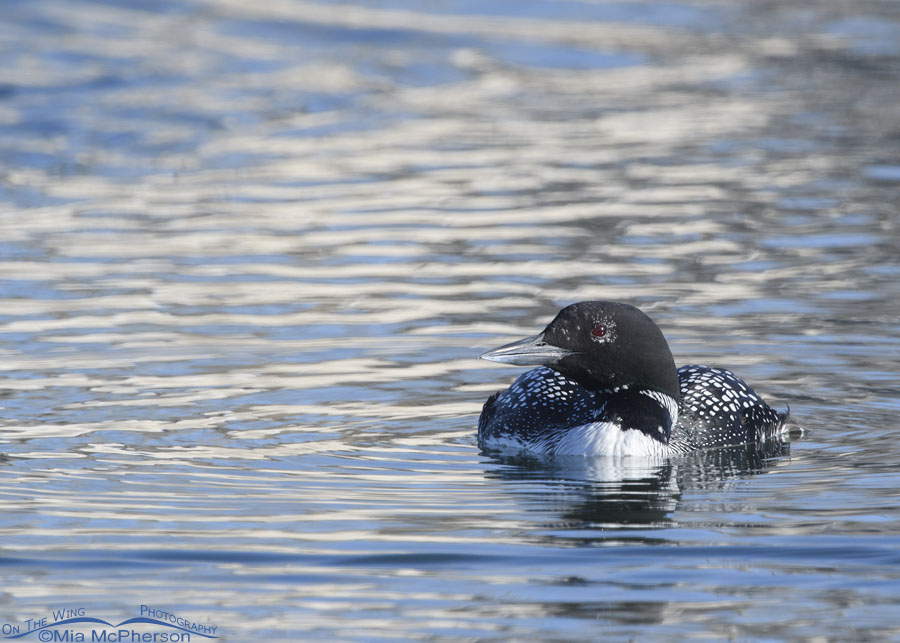 Spring Common Loon in Salt Lake County
Spring Common Loon in Salt Lake County
I spent about an hour photographing the loon and I enjoyed every minute even though the temp was 23°F when I started. The cold didn’t bother me because I was so excited to have this loon in my viewfinder.
The loon moved around on the pond and I followed it at a respectful distance. There were times when I stood still and the loon came in so close to me that I was able to take portraits of the gorgeous black and white, red-eyed waterbird.
Common Loons do not breed in Utah but can be found here at times. I’ve found them most often in late winter to early spring and I know that they are reported in the fall as well. The speckles of white feathers on this loon’s face, chin, and neck collar indicate that the bird is still transitioning into breeding plumage.
When I looked through all of the photos that I took of the Common Loon I had a hard time picking favorites. So I decided to just go through and share some of them in a gallery. Please click the first image in the gallery below to view them larger and you can scroll through them from there.
I love how the reflections on the water from nearby homes colors the water in different shades from white, or silver, to bronze. I also included a few images of the loon that showed some habitat in the background.
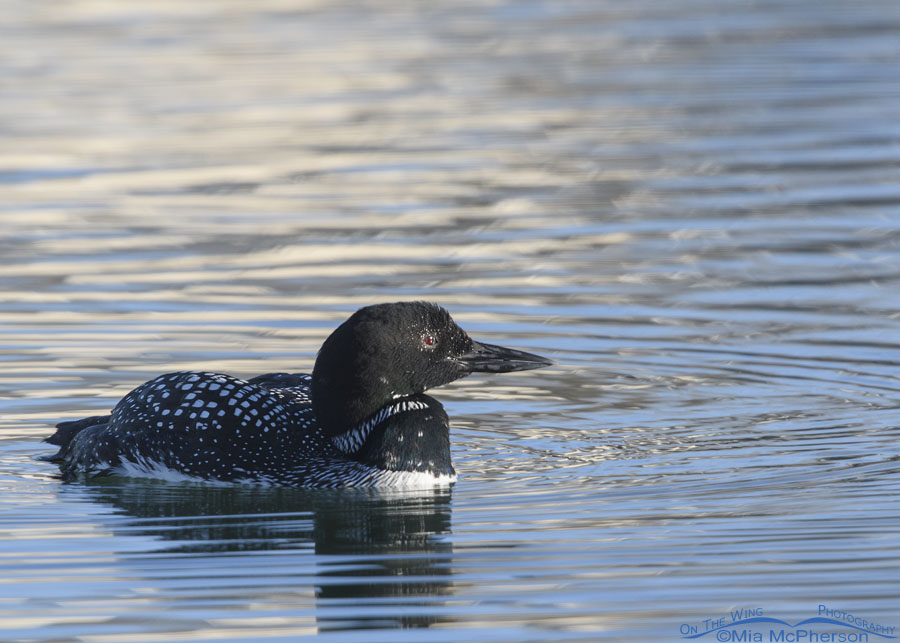 Common Loon resting in calm water
Common Loon resting in calm water
I was thrilled that I had sunshine in order to photograph this striking Common Loon after such a long gray winter. Additionally, the loon was very cooperative and I greatly appreciated that.
Many thanks go out to my friend, Shane, for finding this bird and then messaging to let me know about this beautiful loon.
Life is good.
Mia
Click here to see more of my Common Loon photos plus facts and information about this species.
*All of the photos were taken using my Nikon D500 with a Nikkor 500mm VR lens and a 1.4x teleconverter attached. All were taken using my tripod as well. My ISO was 500, the aperture, exposure compensation and shutter speed varied.


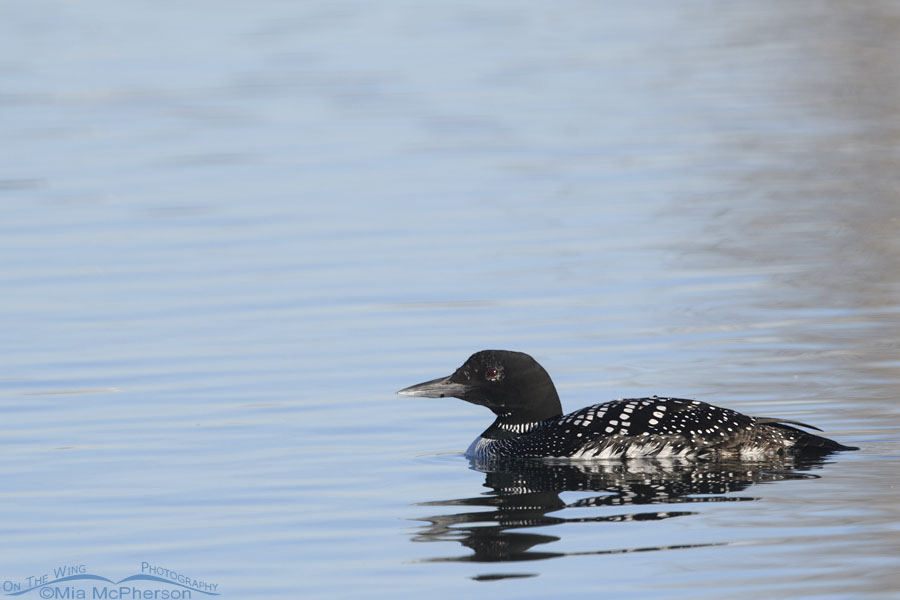
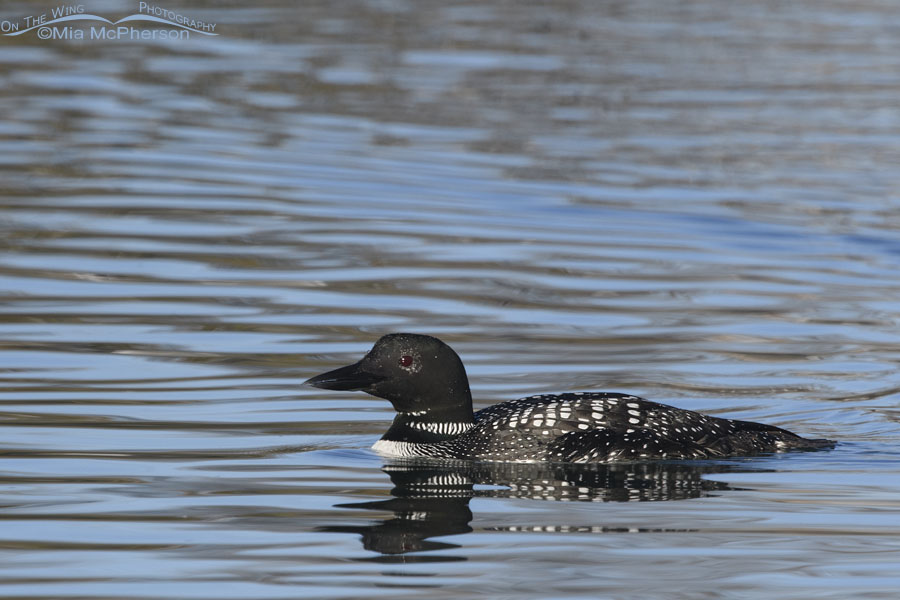
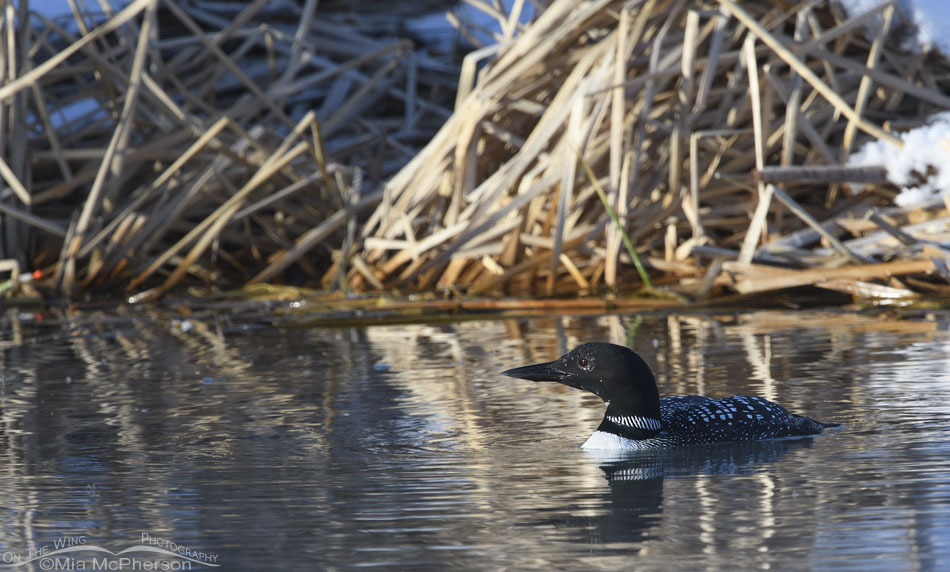
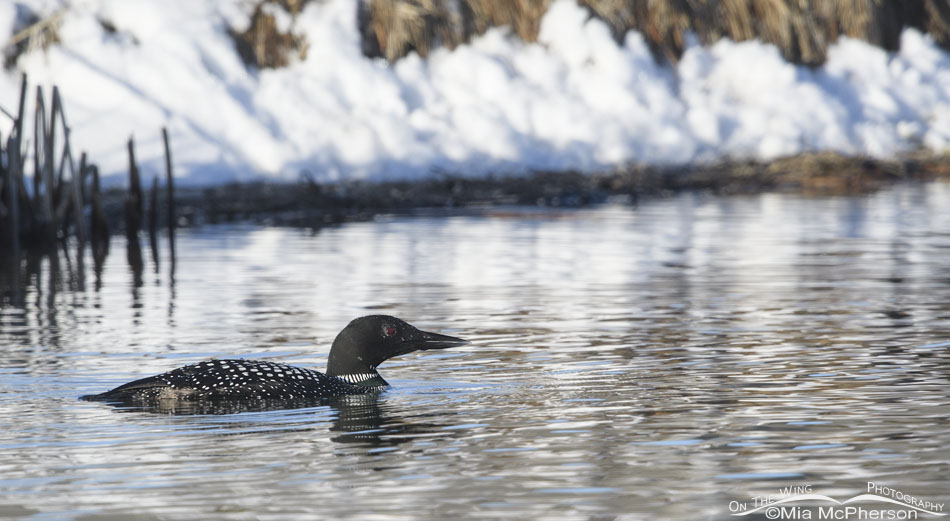
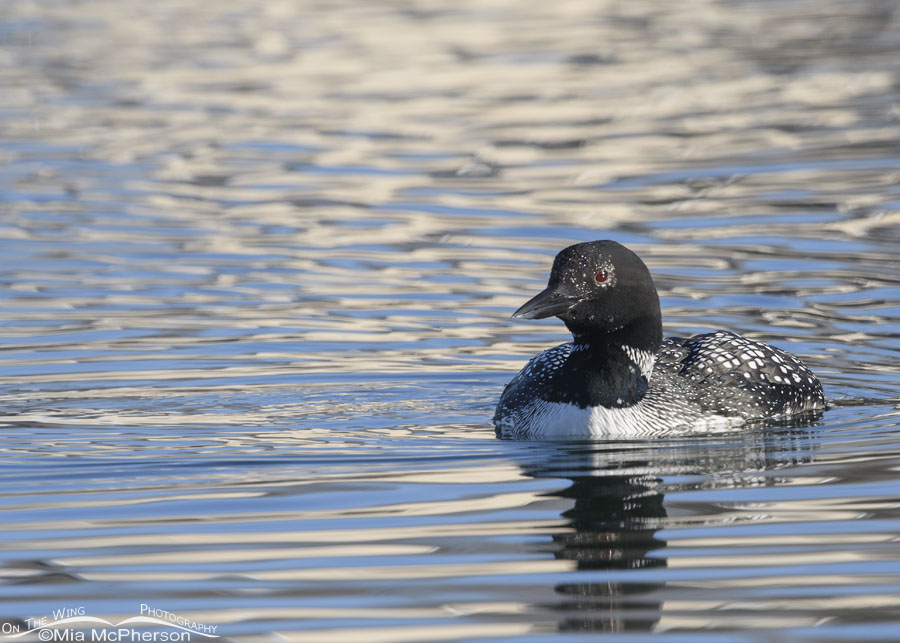
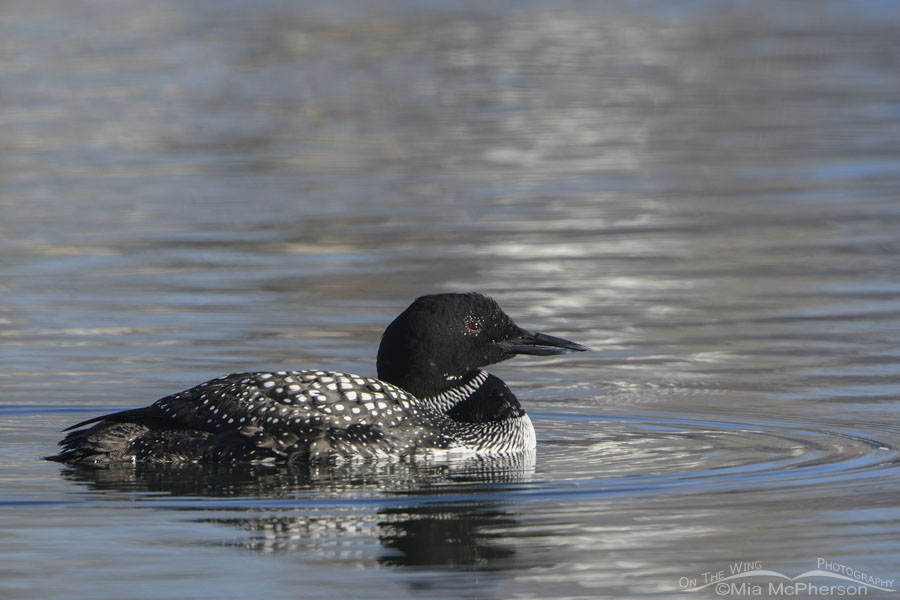
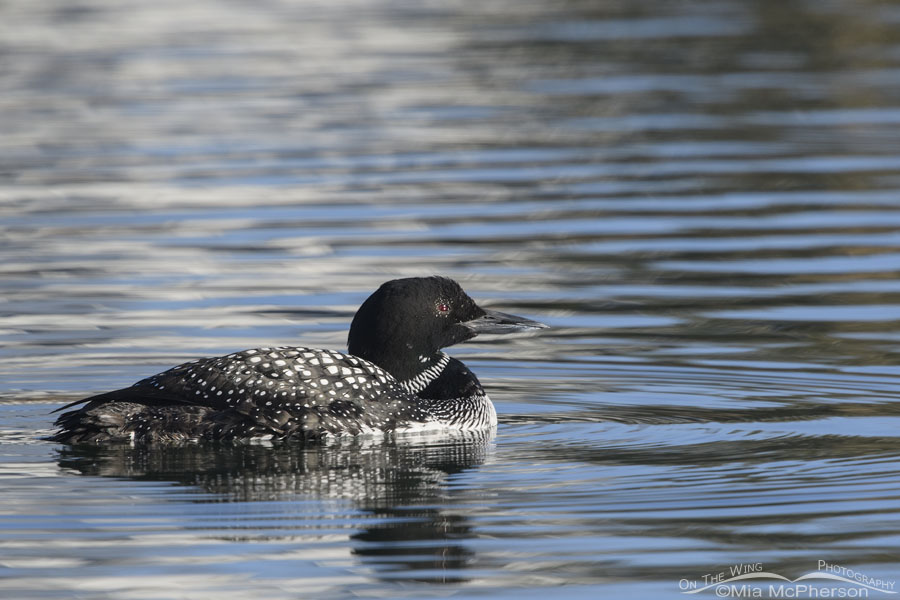
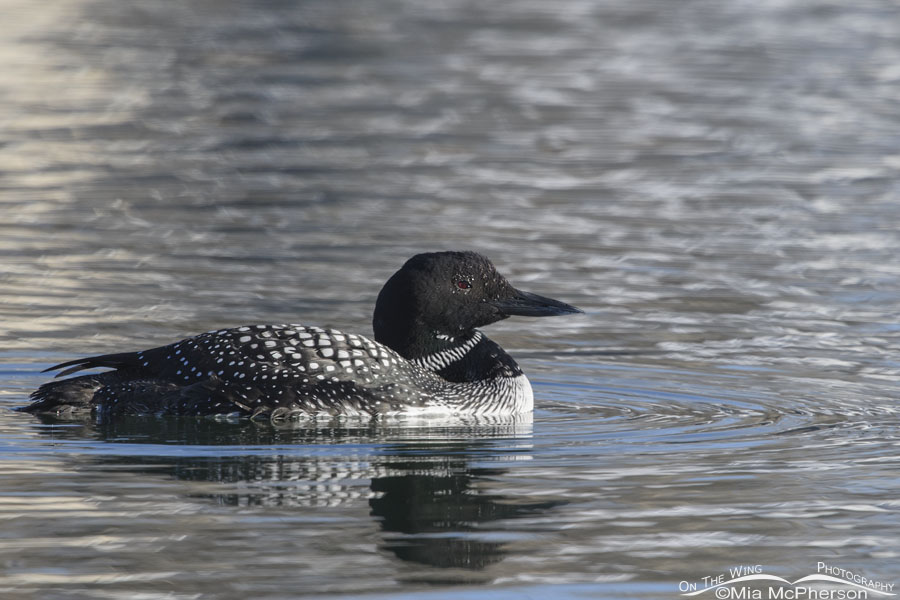
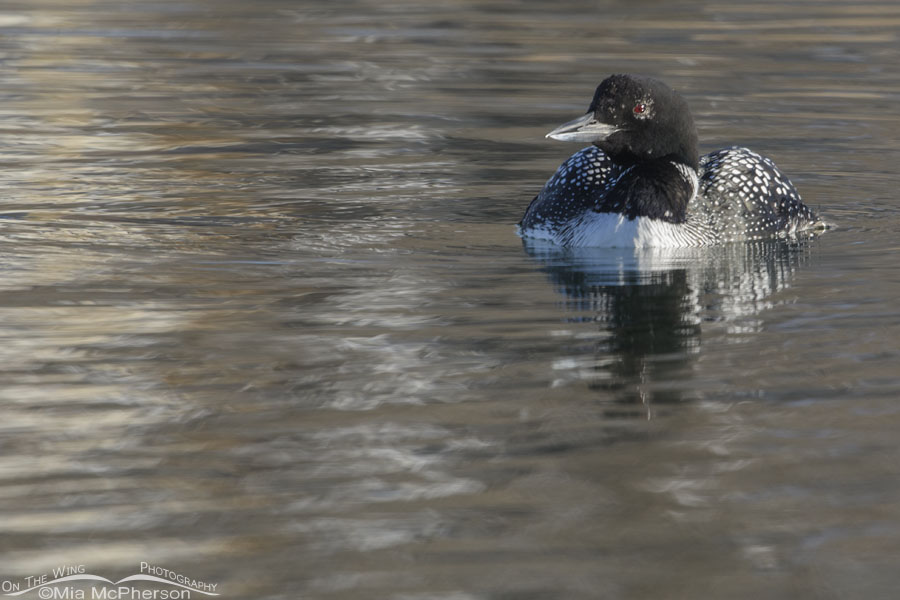
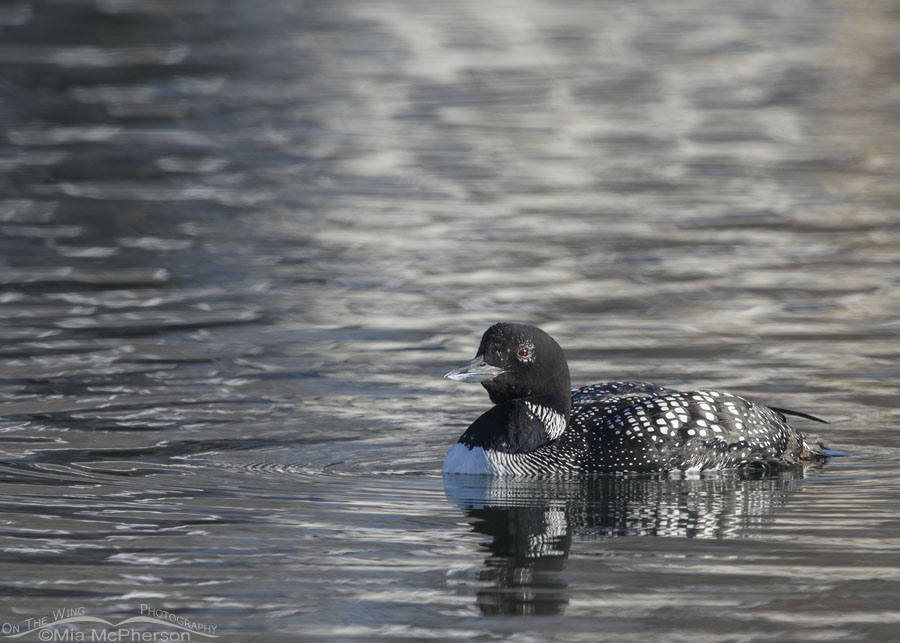
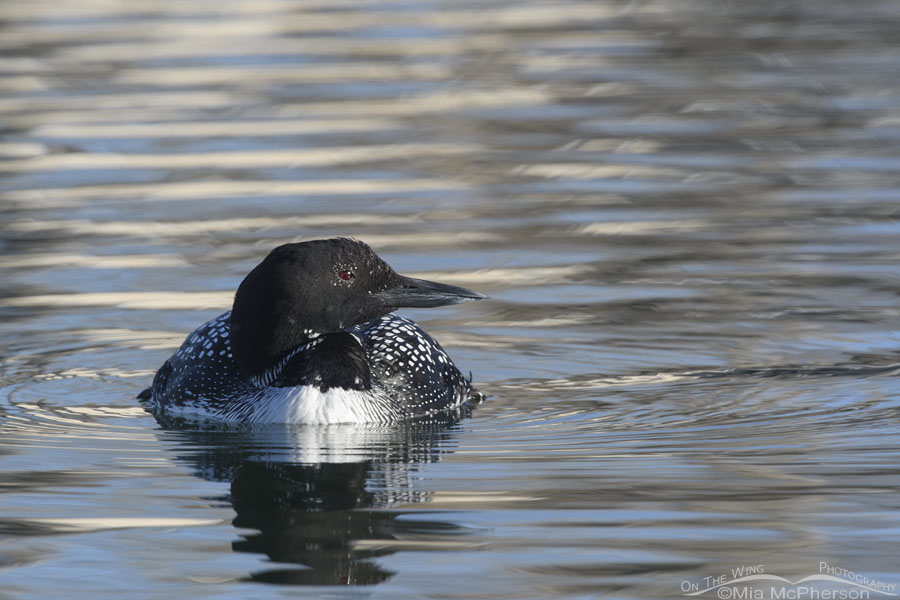
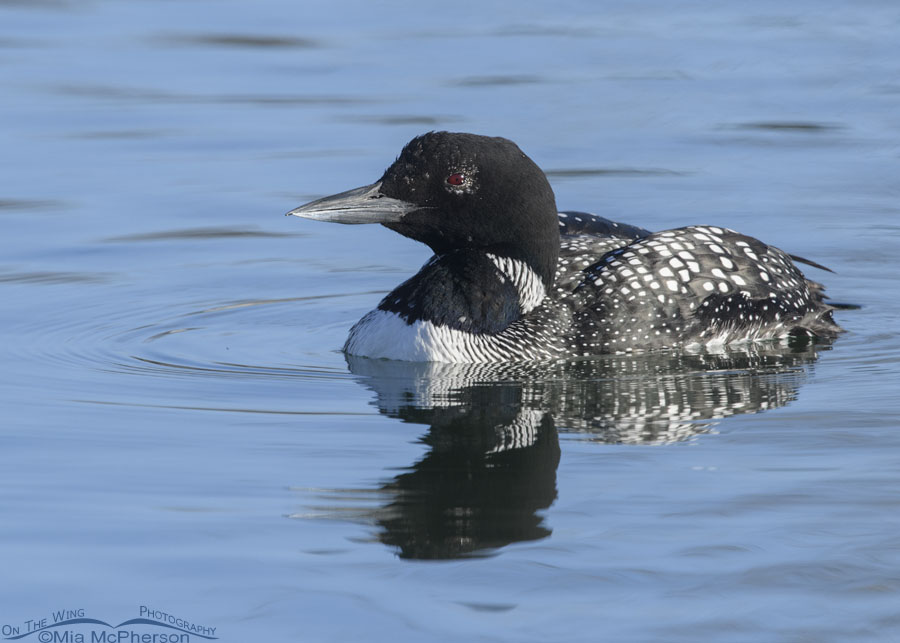
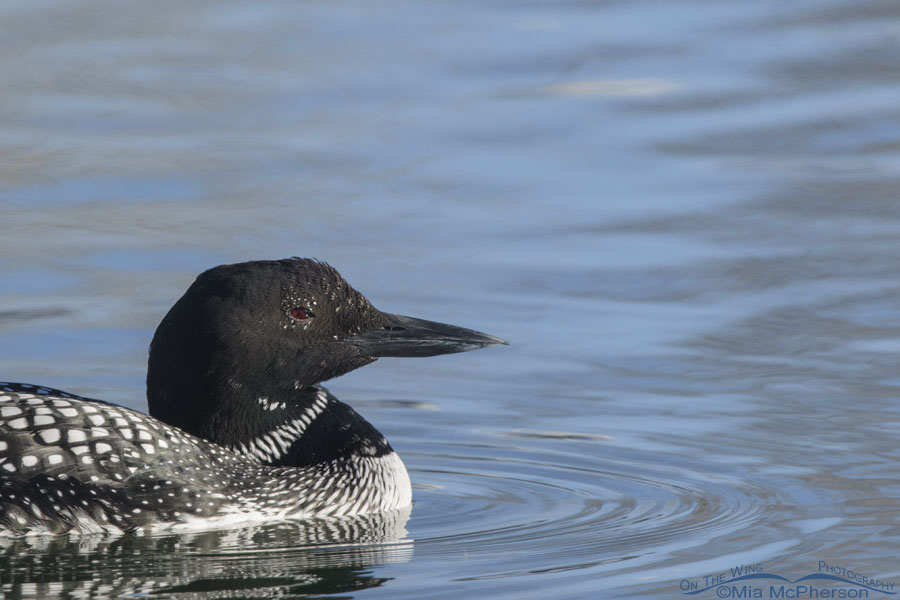
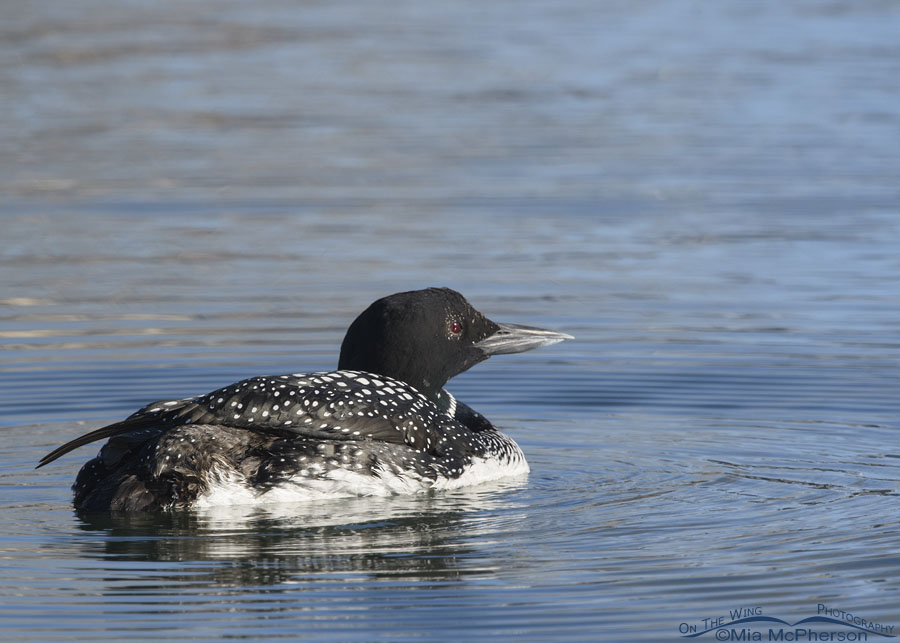
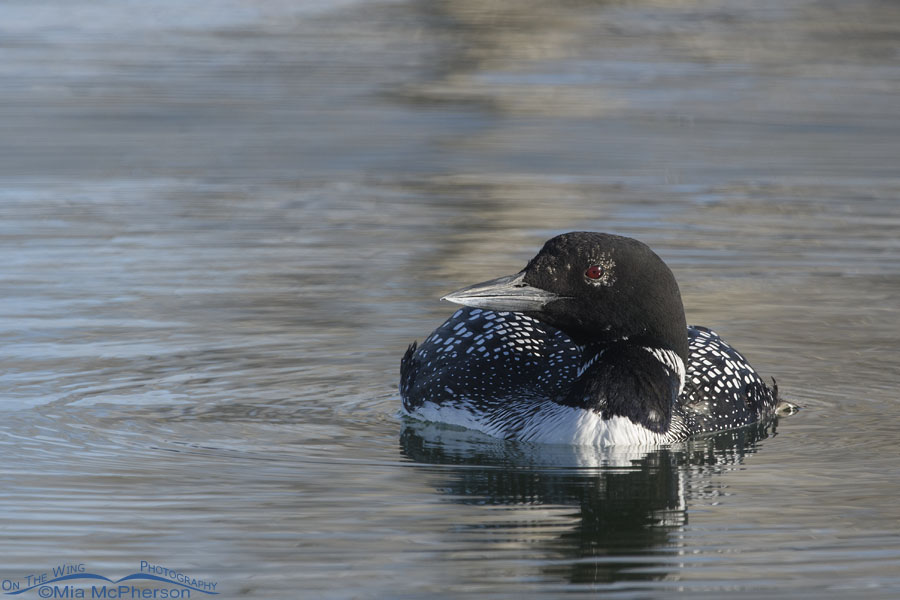
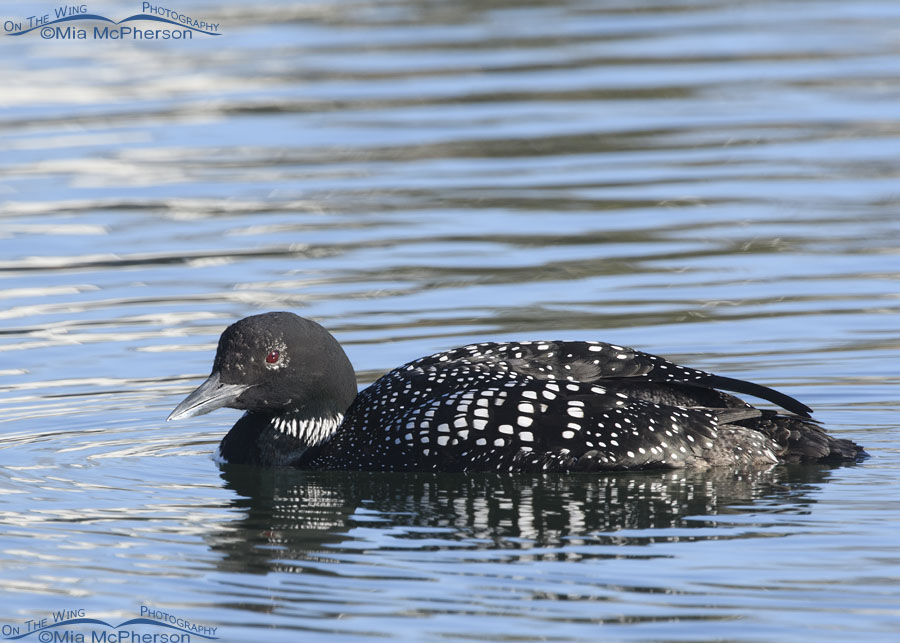
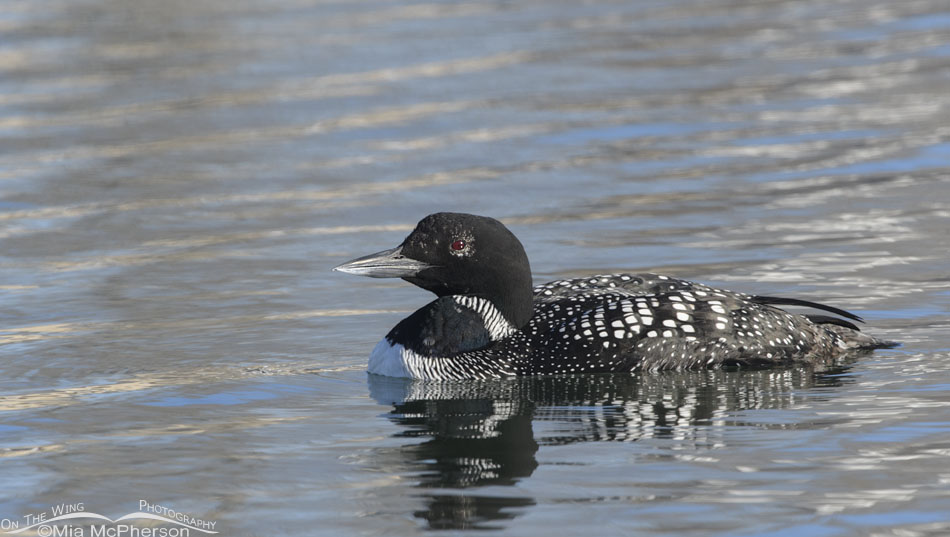
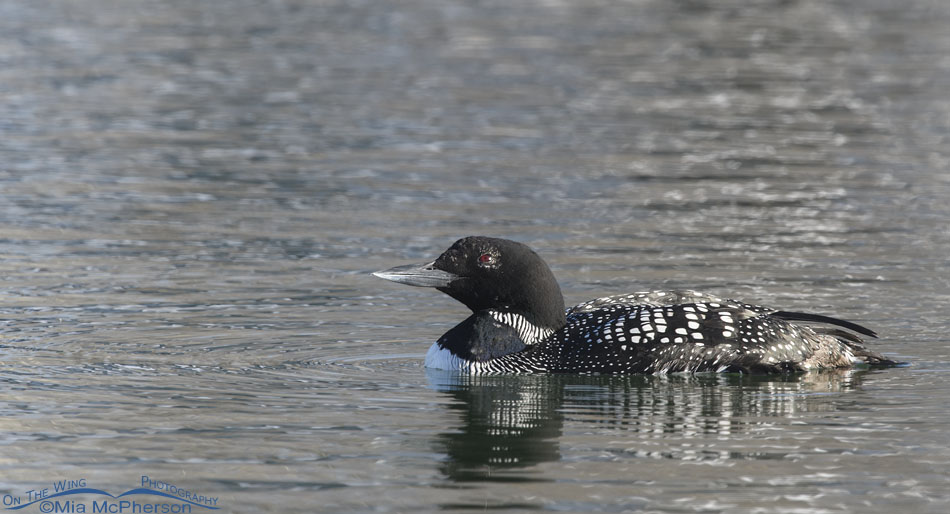
My goal this spring is to try and see loons as they migrate through Utah. Would you be willing to share where you found this bird in salt lake county? I’ll probably try out by vernal also, but would love to see them closer. Your photos are beautiful! Thanks for sharing.
Cynthia, thanks for the compliment on my work, I appreciate it. As for the loon? It has flown away and hasn’t been seen in two days.
Great photos as usual, Mia!
Thank you Ian!
Can’t pick a favorite, thank goodness.
Jo, sometimes I have a really hard time picking favorites so then I do what I did today!
What a strikingly beautiful bird. As Mary says, there is nothing common about him. And what a glorious gallery. Thank you.
Thanks, EC. A bit of clarification, male and female common loons look alike in all plumages with males being slightly larger than females. I would not be able to determine the gender of this bird.
What a beauty — nothing “common” here! Thank you for including so many of the images you took. I’m always reminded of “On Golden Pond” (and Canadian money) when I read about loons.
Marty, along with sexist, eponymous, and names that are non-descriptive, I wish the AOS would change names of birds that have “Common” in them to something else. I don’t care how abundant a bird is, they aren’t common. They are amazing.
These are beautiful I like so many of them too. I find it interesting how the water is blue in your early morning photos and mine was gold and green in later afternoon. As I was reading more about loons since I am not as familiar with them as other birds, we have only had a few in rehab when I was in the center on a regular basis. The literature said they need 30 feet and sometimes up to 1/4 mile in order to take off. Do you think it has that space where it is?
April, I think the loon will have plenty of room to take off when it is ready to move on. I am so happy you were able to photograph this bird too!